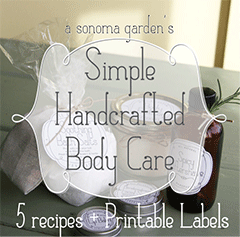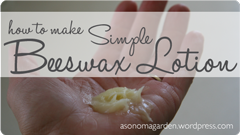As promised, today I’ll explain about how this Grow Biointensive way of planting as explained in How to Grow More Vegetables can improve your garden. As I mentioned this style of gardening has been rediscovered and studied for over thirty years by Ecology Action, up in Northern California. But it’s originally the ancient 4,000 year old Chinese Biointensive way of farming which is patterned after nature’s own intensive biological plantings.
Scott and I figure, if its worked for the Chinese for all those years, it might just in fact make our garden a better place. And while we don’t follow the method exactly, we add a little bit more of the method’s theologies every year. And it has improved our garden greatly. The man who initially brought this method to attention in the States, Alan Chadwick, wisely said, “Just grow one small area, do it well. Then, once you have got it right, grow more!” So, let’s learn this method already, okay?
Here are the components:
Deep Soil Preparation. This is the most important part. Loose soil structure enables the roots to grow deep down in the soil and a steady stream of nutrients can flow into the stem and leaves. Double digging your soil is admittedly back breaking, but it can be done is small steps and the benefits last for years and are certainly worth the effort.
Composting. “In nature, living things die, and their death allows life to be reborn.” (See, Compost really is proof that there is life after death!) Composting is an important way to return carbon, nitrogen, magnesium, sulfur, calcium, phosophorus, potash, and trace minerals back to the earth. These elements are all necessary to maintain the biological cycles of life that naturally exist. So ahead make that compost pile, it’s easy!
Close Plant Spacing. Nature doesn’t grow it’s plants in long, spaced out rows, why should we? We waste a lot of space growing things so far apart.
Companion Planting. This is a fascinating subject to explore. It’s one of our favorite garden explorations. Basically, you want to grow things together that will enhance each other, such as beans and cucumbers.
Plant Carbon-Efficient Crops. Planting your garden in about 60% of the growing area with seed and grain crops will produce large amounts of carbonaceous materials for compost and provide significant amounts of dietary calories. Have you ever thought about growing crops for not only your consumption, but also to return back to the soil? That’s a new one, isn’t it? But a great one.
Plant Calorie-Efficient Crops. Remember, this methodology is taught to show people how to grow their entire diet in one 4,000 square foot plot (a vegan diet of course). So thinking of planting the most calorie rich vegetables is important. You want to plant about 30% of your garden to potatoes, burdock, garlic, and parsnips which produce a large amount of calories for your diet.
Open-Pollinated Seeds. Use these to preserve genetic diversity.
A Whole, Interrelated Farming System. This Grow Biointensive food-raising method is a whole system and it’s components, when used all together create high yields that nourish not only yourself but the earth.
Cool system, isn’t it? What I’ve written about is only a taste of what you find in the actual book, How to Grow More Vegetables. Its full of incredible information on starting from seed planting with lunar cycles, charts like you wouldn’t believe, and diagrams of how to lay out your garden. Step by step illustrations on how to start small and eventually grow a plot into a 4,000 sq. foot self sufficient garden of Eden, or Garden of Eatin’ as it were.
I can’t tell you how much you need to read How to Grow More Vegetables. Add it to your Amazon wish list or check it out at your local library. You’ll love it too!






































